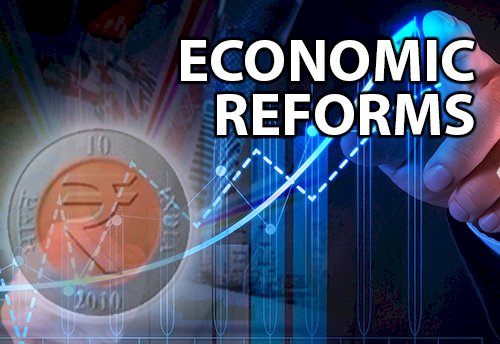How Reforms changed India
For Printing Download Epaper from files section from bottom of this page

The year 1991 was a year of a watershed for India from where we opened our doors to liberalization and world markets which were very eager to enter here. Before that, we still remember the days when we used to wait for months or even years to get a landline phone connection or LPG gas cylinder connection. We have seen long queues in the eighties to get a gas connection and people standing in queues from earlier night. Prime minister first from the non-Gandhi background who had completed his term successfully, initiated economic reforms and we also witnessed dramatic changes in the situation. Now, we just book the gas cylinder from our phone and the next day the cylinder is delivered to our home. The neo middle-class emergence is the result of reforms. Today we can’t imagine life without mobile phones and this is the story of how India changed due to the opening up of Indian markets to international companies. They were desperate to enter into Indian markets which were of huge size. Since the year 1991, Indian markets were flooded with foreign goods from toys to cars and even planes. India became rich and before the recession struck, it was considered as one of the favorite investment destinations for foreign multinational companies. PM Modi even raised this bar of development with the announcement of several decisions favorable for investment. But, he failed to continue the speed of reforms in later years as it is any political party’s compulsion. The reforms and electoral success do not go hand in hand. The same popular decisions were followed by the Modi government and so the reforms express were derailed from its path. Not only this, the reforms while making India a proud nation of development, on the other hand, the reforms widened the rift between rich and poor. Now, the gap is so high that, there are two India one is for the rich class and another is for people languishing in poverty. If we decide to take a birds-eye view of the past period, we can come to the conclusion the economic reforms brought many good changes in the country while at the same time, they have pushed many people in the large ditch of poverty and lacking basic amenities also. The reforms mainly removed many license raj harassment of industrialists and industries were freed from any obligations. But at the same time, there had been automation which has resulted in job loss. In every field, the machine ruled and the usefulness of men gradually faded away which triggered huge unemployment. This is just for a period before the Corona pandemic. During the pandemic, we know what happened in the country. This was the same period when dot com companies got a boom and later they lost eventually importance. The private sector was made strong and more creative in this period and its participation also increased. The financial sector services and capital markets became stronger and foreign investors thronged to India. It gave rise to the microfinance sector which did not exist three decades ago. But, while counting all these advantages of economic reforms, we can’t neglect the ramifications of giving boost to private sector excessively. Today, private sector has failed to deliver the national expectations from it and government sector has already under deep pressure to provide jobs to the youth. This means, we have not achieved the full fruits of liberalizations as well as we can’t return back to policies prior to 1991. This only has created lot of problems for us with there are no government support for many activities even for loans. Thus economic reforms should be continued by Modi government as well as we can’t completely abandon the socialist model which is the base of our economic policy. We should find a balance between these two.

 Active Times
Active Times 
















